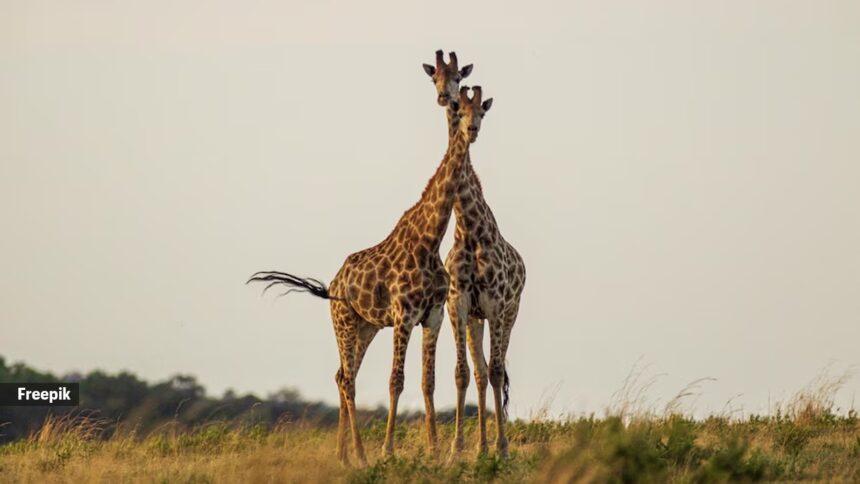In the animal kingdom, courtship rituals can be. Among the towering giraffes of Africa, male suitors have developed a particularly unusual method to determine if a female is ready to mate, and that is by tasting her urine.
This remarkable behaviour, while unappetising to human sensibilities, represents a sophisticated adaptation that allows these majestic creatures to overcome the unique challenges presented by their distinctive anatomy.
Unlike many mammals, female giraffes don’t display obvious visual cues when they’re fertile. As researchers Lynette and Benjamin Hart note in their study published in the journal , according to , “Giraffes don’t go into heat like cats or dogs, don’t have a breeding season, and don’t give visual clues that they’re ready to mate.”
Instead, male giraffes must rely on chemical signals to determine fertility. The process begins when a male giraffe, called a bull, approaches a female and nudges her, sometimes repeatedly, until she responds.
“A male giraffe — called a bull — nudges a nearby female giraffe — a cow — and sniffs her genitalia. Sometimes he has to nudge her a few times, but eventually the female giraffe widens her stance and urinates for about five seconds into the male giraffe’s mouth,” according to .
What follows is a behaviour known as the ‘flehmen response,’ where mentions that the male responds “by curling back its upper lip, baring its teeth, and breathing in with its nostrils closed for several seconds.” This response, also seen in horses and goats, helps transfer scents to a specialised organ.
“From the mouth, the scent travels to the vomeronasal organ, or VNO, which detects pheromones,” report the Harts in their study published in Animals, according to . This organ allows the male to analyse chemical compounds in the female’s urine that indicate whether she is ovulating and ready to mate.
If the chemical signals aren’t right, the male moves on to another potential mate. This efficient system prevents wasted energy in pursuing females who aren’t fertile.
Why do giraffes engage in this direct sampling method rather than simply smelling urine on the ground, as some other mammals do? The answer lies in their unique physical structure.
“Giraffes’ long necks and heavy heads make bending over to on the ground an unstable and vulnerable position,” explains Lynette as per . Their height, which serves them well for browsing on tall trees, would become a liability if they needed to bend down to investigate scents.
The researchers observed giraffes in Etosha National Park in Namibia across multiple years (1994, 2002, and 2004) and “never saw a giraffe investigate urine on the ground,” mentioned.








